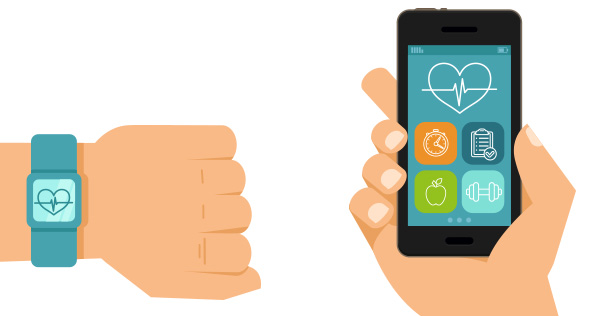Start Moving With a Fitness Tracker
You’ve probably seen people wear-ing digital fitness trackers, small gadgets that come in wearable styles such as wristbands and pendants or hand-held versions you can slip into a pocket. Why are they popular? The devices record your workout data, and they track your prog-ress on those measures. “We’ve seen them make a big difference in people’s workouts,” says Linda Ars-lanian, director of rehabili-tation services at Harvard-affiliated Brigham and Women’s Hospital.
Accuracy, Accountability, and Motivation
Unlike logs, journals or standard pedometers, fitness trackers accurately record objective data about your workout, including the pace, distance, intensity and duration of your exercise. They send the information to a software application on your smart-phone or computer, where you can view it in graphs and even compare activity day by day on calendars. And there are benefits to knowing that something is following your every move, namely motivation and compliance.
“When you can see what your activity levels are, there’s account-ability, and you’ll want to stick with a workout,” explains Arslanian. “It motivates you to keep building on what you’ve accomplished.”
Another Benefit
Some fitness trackers can also record your heart rate, which is important for determining the intensity of your workout.
“If you’re doing aerobic exercise, you want to exercise at 60 percent to 80 percent of your maximum heart rate for at least half an hour, three to five times per week,” says Arslanian. “Do that, and your endurance will improve.”
Having a device that gives you that information, or alerts you if you’re below or over your estab-lished training heart rate, can make workouts more effective. It can also make workouts safer, especially if you have heart problems or other medical conditions.
The most accurate way to deter-mine your maximum heart rate is to undergo a stress test. But for healthy individuals, it is possible to simply estimate your maximum heart rate. To calculate an estimat-ed maximum heart rate, subtract your age from 220. (For example, if you’re 60 years old, your maximum heart rate is 160 beats per minute.) You’ll want to exercise at 60 percent to 80 percent of that number:
• 60 percent of 160 (0.60 x 160) is 96 beats per minute.
• 80 percent of 160 (0.80 x 160) is 128 beats per minute.
So, when exercising, you’d want to keep your heart rate between 96 and 128 beats per minute.
What you Should Do
Arslanian warns that you shouldn’t embark on an exercise program without advice. “You need the OK from your doctor first, and you need someone to craft an exercise program that is in your training range and your safety zone, with a range of intensity and duration that will have the greatest chance of being effective,” she says.
Using a fitness tracker can make it easier to stay within that train-ing range.
Where Do I Get One?
You’ll find fitness trackers wher-ever fitness equipment is sold, such as big box stores, electronics stores, sporting goods stores and Internet sites. Features may be simple – counting the number of steps you take or calories you burn – or they may be more sophisticated, using sensors to capture your heart rate, perspiration, skin temperature and sleep patterns.
Prices increase with the amount of bells and whistles available. The majority are in the range of $50 to $200.
Best bet: Look for something that’s easy to use and charges quickly. And decide in advance how much information you want and whether you want to wear the device on your wrist or clip it onto your clothes. Once you start using it, share the information with a partner for extra account-ability and motivation. And tell your doctor about your progress at your next visit.









